Showing 811–820 of 1079 results
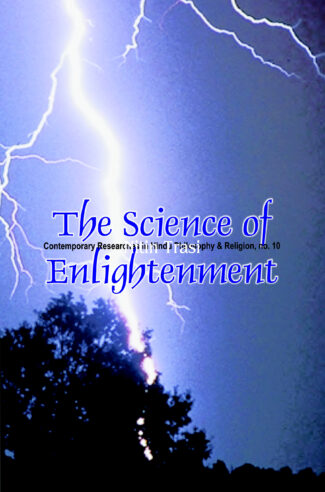
This work demystifies the entire subject of spirituality and the phenomena of Enlightenment and Liberation by demonstrating how they have a scientific basis and are definable in scientific/psychological terms.
What is the precise nature of Reality or God? And what exactly, in scientific terms, is the much-talked about spiritual phenomenon called Enlightenment? Is it at all scientifically possible for a state devoid of ego to exist? And can a person do his normal duties in life in such a state? This book answers these and kindred questions convincingly: in a way that should appeal to a scientist, a spiritualist and a lay person alike. Uncommonly combining in him the rationality of a medical scientist and the profundity of his religio-philosophical studies, the author demonstrates how the spiritual phenomena of Enlightenment and Liberation do have an eminently satisfactory scientific explanation an explanation which he also reconciles with conventional spiritual teachings. Finally, flitting adroitly from Advaita to Tao, Zen to Sufism, Buddhism to Christianity, Dr. Trasi shows how the teachings of different faiths arent different in essence, but just constitute intricate parts of the one and the same grand, big picture. With deep insight, forceful logic and supporting references, Dr. Trasis book not only dispels many of the myths, mis-conceptions and distortions woven around Enlightenment, the Liberated State, the Soul and Death, but explores the rationale behind wide-ranging traditional beliefs as well. Also set out is a scientific explanation of diverse spiritual terms. Nor is the practical aspect neglected here including, as it does, a scientifically-backed guide to offset the oft-recurring doubts and questions that nag the average spiritual enthusiast. Written lucidly, the book is bound to interest scientists, sceptics, and anyone else even remotely concerned with spirituality.
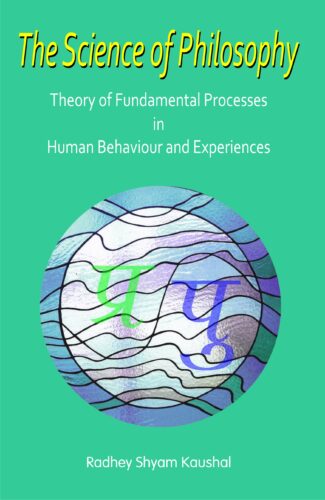
The book talks about the concept of consciousness, its incorporation in physical theories, presents the basics of Vedanta philosophy, theory of karma, man-machine interaction, the interaction of human being with physical world as per Vedantic philosophy, and interactions among human beings. It also points out the limitations of modern science in describing some aspects of human behaviour.
The volume is concerned with the concept of consciousness and its incorporation in physical theories. It tries to look for a unifying mechanism for fundamental processes taking place inside the human being which are responsible for all human actions and behaviour in outer world. It argues that the essences of life in conjunction with the consciousness can provide a viable framework for understanding the physical world as well as of human/non-human behaviour and its experiences.
The book presents the basics of Vedanta philosophy, comparing its viewpoint with that of objective science and other philosophies to throw light on classification of objects and inner and outer worlds and associated experiences. It studies the theory of karma, recapitulating the western view and views of modern science, and presents the Vedanta theory of karma. It takes up aspects like the role of the human being in a process with a discussion on the man-machine interaction; the interaction of the human being with the physical world within the framework of Vedanta philosophy; and the interactions among human and non-human beings. Several new concepts like dressing of essences of life with consciousness, principle of minimum efforts, a (3/2)-rule for the fragmentation of consciousness, a definition of mind set function and its evolution, K-effect etc. are introduced in the book for the first time. It repeatedly points out the limitations of modern science in describing some aspects of human behaviour.
The work will be useful to a broad spectrum of readers, particularly scholars and students, physicists, biologists, psychologists, professional philosophers, particularly philosophers of science.

This book showcases popular medicinal and edible plants, collating the findings of more than 300 research and review articles, scientifically validating the traditional beliefs of their medicinal and health-care efficacy.
The interest in medicinal plants and edible plants of medicinal value is fast growing, worldwide. Though the classical textbooks on Ayurveda, the Indian traditional health-care system, provide detailed and authentic information on these plants medicinal and heath values, there lacked scientific validation. Recent researches have shown that these plants cure many a disease or arrest the onset of many chronic diseases including cancer, and incredibly contribute to human well-being, sans any side effect.
This volume thus showcases popular medicinal and edible plants, collating the findings of more than 300 research and review articles, scientifically validating the traditional beliefs of their medicinal and health-care efficacy. It should be of immense use to scientists, medical professionals, heath-care industry and the actual users.

The world famous Amaravati sculptures and art pieces take the pride of place in India’s best museums today. This volume lists and analyses with photo illustrations the large museum antiquities typologically and chronologically. The book will interest historians, archaeologists and general readers.
The Amaravati sculptures are famous throughout the world for their special features and they form a distinct school of art called Amaravati school of art. Though Amaravati art pieces take the pride of place in Indias best museums, the sculptures in the site museum at Amaravati itself have not been assigned enough significance. This volume lists and analyses the museum antiquities typologically and chronologically. The effort includes all the museum antiquities, including many objects of seemingly minor importance, which are described in detail. Their types and features, provenance, probable period, measurements and accession number, references to them and details of inscriptions relating to them are provided. The catalogue of objects features twenty main headings including the pillars, slabs, pilasters, beads, ceramics and copper plate grants. There are photo illustrations of a large number of antiquities that form the museum collection which have enormous archaeological, epigraphic and iconographic merit. The book will interest historians, archaeologists and general readers keen on knowing about Indian culture and art.
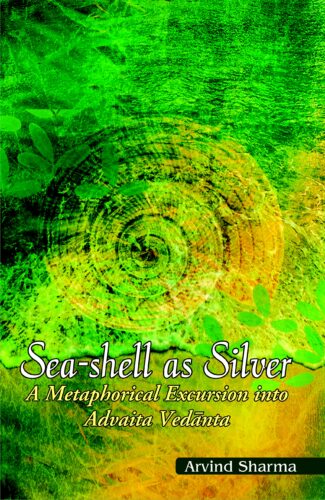
The question of the relationship between the ultimate reality of the universe, and its proximate reality as experienced by us, is apt to boggle the mind. Nevertheless, the Hindu school of philosophy, known as Advaita Vedanta, tries to render it comprehensible at the level of the individual through everyday analogies like mistaking a piece of seashell for a piece of silver.
The question of the relationship between the ultimate reality of the universe, and its proximate reality as experienced by us, is apt to boggle the mind, given the vastness of the dimensions involved. The distinction between it and us is like the difference between an avalanche and a snowflake. Nevertheless, the Hindu school of philosophy, known as Advaita Vedanta, tries to render it comprehensible at the level of the individual by pressing everyday analogies into service. One such analogy is suggested by our experience in life when we momentarily mistake a piece of seashell for a piece of silver. Advaita Vedanta then proceeds to employ this pivotal analogy to explore the various dimensions of the relationship of the individual to the world, to the ultimate reality, and of the ultimate reality to the world. This book uses this metaphor as a window which opens out into the world of Advaita Vedanta.
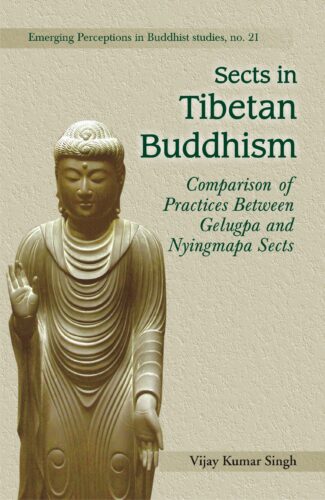
The teachings of Buddha are timeless and priceless and can answer most of the problems that the materialistic world faces today. Nyingma, the first-ever sect of Buddhism in Tibet introduced by Padmasambhava of India, and Gelug, the fourth sect in succession, are dealt with in detail in this book.
The teachings of Buddha are timeless and priceless. The eightfold path as preached by Buddha is still relevant and concurrent with non-violence and compassion in its central point and can answer most of the problems that the materialistic world is facing due to ignorance as its root cause. The Tibetan books were well preserved by the Lamas in their monasteries throughout centuries and in live conditions. India, once the source of religion for Tibet, lost its Buddhist treatises during the past few centuries. Tibetan Buddhist treatises are considered the most authentic source for restoration of Buddhist teaching in the Indian sub-continent. Nyingma, the first ever sect of Buddhism in Tibet was introduced by Padmasambhava of India and still it is in practice. The Gelug sect is the fourth in succession and it claims to have the largest number of followers not only among Tibetans but also popular in the eyes of Western Buddhists, beside others, since more and more Gelug monks are invited to deliver lectures about Buddhism in the West. The responsible factors, inter alia, are perhaps the simplified and elaborate teachings about the altruistic state of mind i.e. Bodhicitta, great compassion, teachings on calming the mind and discerning the real (zhi Nas and Lha Thon) which carry most of the answers to the problems which the world is facing. The present book is an attempt to disseminate the teachings of Buddha from the purest available sources i.e. Buddhism in Tibet. It is a tribute to the peace loving Tibetans who have lost their homeland but still preserve the Buddhist teachings among themselves.
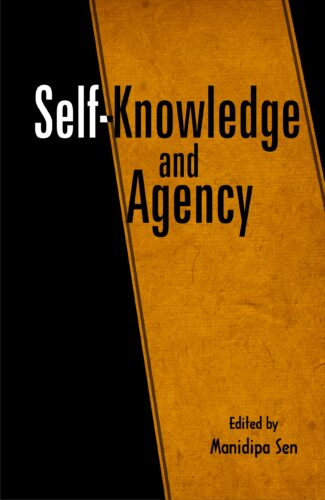
The contributions in this volume deal with contemporary debates in Philosophy of Mind, Philosophy of Action and Moral Philosophy. Some of them relate these current debates to questions raised by ancient Greek and Indian philosophers regarding the nature of self-knowledge and moral agency.
Inquiry concerning the nature of self-knowledge has been one of the fundamental concerns of philosophy from its very inception. The enterprise of providing an adequate account of self-knowledge is closely related to questions regarding the role of humans as subjects of experience and as agents of actions. This collection of essays purports to address the problem of self-knowledge and agency by focusing on: a) the epistemological questions, and b) the relationship between the epistemological issues, and issues centering on agency and morality.
The contributions in this volume not only deal with contemporary debates in Philosophy of Mind, Philosophy of Action and Moral Philosophy, some of them relate these current debates to questions raised by ancient Greek and Indian philosophers regarding the nature of self-knowledge and moral agency.
A whole range of questions regarding the nature and status of first-person epistemology, its connection with questions concerning consciousness, intentionality, rationality, agency, personal identity, and morality are discussed in the twelve essays in this volume written by philosophers actively engaged in research in these areas. These essays provide accounts of the complex manner in which human beings understand and describe themselves as well as engage with the world.

The book constellates Sri Aurobindo’s approach with transpersonal psychology, contemporary lineages of phenomenology, so as to develop a transformative Yoga psychology redefining the boundaries and possibilities of the human and opening up lines of self-practice towards a wholeness of being and becoming.
Groomed in a modern academic tradition and post-Enlightenment ideals of creative freedom and social critique, Sri Aurobindo (1872-1950) turned his attention to yoga and the limits of consciousness in its ability to relate to and transform nature. In the process, he documented scrupulously his experiments and experiences based on a synergistic existential framework of practice.
Debashish Banerji correlates the approach to yoga Sri Aurobindo took in his diaries with his later writings, to derive a description of human subjectivity and its powers. Banerji constellates Sri Aurobindo’s approach with transpersonal psychology and contemporary lineages of phenomenology and ontology, to develop a transformative yoga psychology redefining the boundaries and possibilities of the human and opening up lines of self-practice towards a wholeness of being and becoming.
Both scholar and Yogi, Aurobindo (1872-1950) carefully documented the unfolding of spiritual consciousness starting shortly after his deep revelatory experiences while in prison in 1908. His observations were recently published in a two volume set, The Record of Yoga. Debashish Banerji has analyzed this work and offers a detailed, clear, systematic and inspirational interpretation of how the Yoga of Sri Aurobindo may be understood and practiced.
Þ From the `Foreword’ of
Prof. Christopher Key Chapple
Doshi Professor of Indic and Comparative Theology Loyola Marymount University, Los Angeles, (USA)
A German lady, a veteran Yoga practitioner, travels to Ladakh, also known as ‘Little Tibet’. There she dives as much into life in its bustling capital Leh as into moonlike landscapes and Buddhist locales. She spends a week in a solitary meditation cabin, goes on a trek and meets not just Ladakhis but also interesting fellow travellers from all over the globe.
So is this a travelogue? Or are these musings in a journal? Yes, but also much more. Charmed by her chatty narration, spiced with irony and humour, you are gently led to contemplations on life and living, changes wrought by globalization, man-woman relationships, cultural differences, loss of identities, fear as an inherent part of the human psyche and the burgeoning objects of enjoyment versus the diminishing capacity to enjoy.
Before you know it, you realise that HellaNaura’s deep reflections have awakened in you a need to integrate some spiritual viewpoints into your busy modern life. Why? Because her experiences and many joys, in spite of several difficulties, are a proof that a ‘spiritual’ outlook is an effective antidote to the crafty seduction by material and sensual gratifications. And, as she notes, even parts of Ladakhi society – formerly happy, prosperous and woven tightly together with warmth and intimacy – seem to be succumbing to its lures.
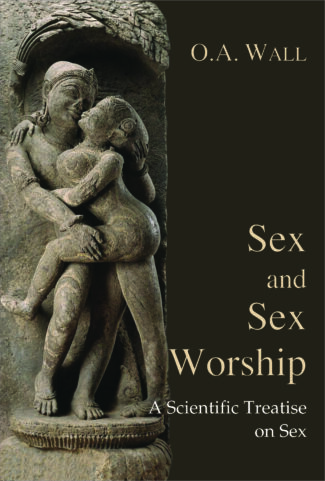
Mankind, when it gave expression to its first dawning of religious thoughts, wove a fabric of myths and theories about religion, the warp of which ran through from earliest historical times to our own days as threads of the warp of philosophies and theories about sex, male, female, love, passion, lust, desire, procreation, offspring, etc. The succeeding ages and civilizations wove into its warp the woof of the individual religions, myths and fables of gods and goddesses, so that the whole fabric of beliefs became refined as mankind itself advanced.
Sex and Sex Worship is the result of a long-time, arduous study of the concept of sex and the worship of phallus in various civilizations and in the development of different religions, modern and old, over a period of many millennia. The book makes one grasp a lot of topics associated with sex and sex symbols such as nature of sex and reproduction, status of women, cosmo-gonies, sex in man and animal, sexual relationship of gods and goddesses, virgin worship, phallic festivals, among many, while making it clear that the worship of generative organs was rather a use of representations of phallus and yoni as symbols for certain religious ideas which were embodied in nature worship.
It also vividly talks about the concept of sex and sex organs in art and ethics, sculpture, art anatomy, etc. The contents in toto lead one to the myriad aspects and concerns associated with sex and phallic worship. It is a must read for a scholar and a common man alike.
Mankind, when it gave expression to its first dawning of religious thoughts, wove a fabric of myths and theories about religion, the warp of which ran through from earliest historical times to our own days as threads of the warp of philosophies and theories about sex, male, female, love, passion, lust, desire, procreation, offspring, etc. The succeeding ages and civilizations wove into its warp the woof of the individual religions, myths and fables of gods and goddesses, so that the whole fabric of beliefs became refined as mankind itself advanced.
Sex and Sex Worship is the result of a long-time, arduous study of the concept of sex and the worship of phallus in various civilizations and in the development of different religions, modern and old, over a period of many millennia. The book makes one grasp a lot of topics associated with sex and sex symbols such as nature of sex and reproduction, status of women, cosmo-gonies, sex in man and animal, sexual relationship of gods and goddesses, virgin worship, phallic festivals, among many, while making it clear that the worship of generative organs was rather a use of representations of phallus and yoni as symbols for certain religious ideas which were embodied in nature worship.
It also vividly talks about the concept of sex and sex organs in art and ethics, sculpture, art anatomy, etc. The contents in toto lead one to the myriad aspects and concerns associated with sex and phallic worship. It is a must read for a scholar and a common man alike.
| There are no products |